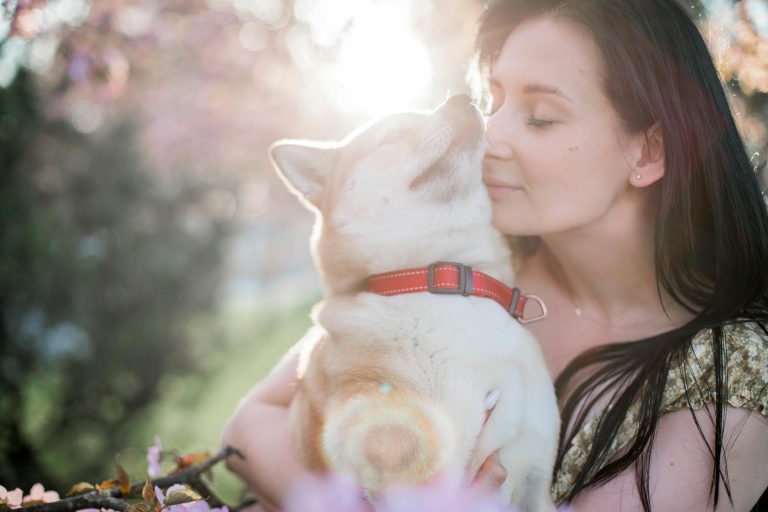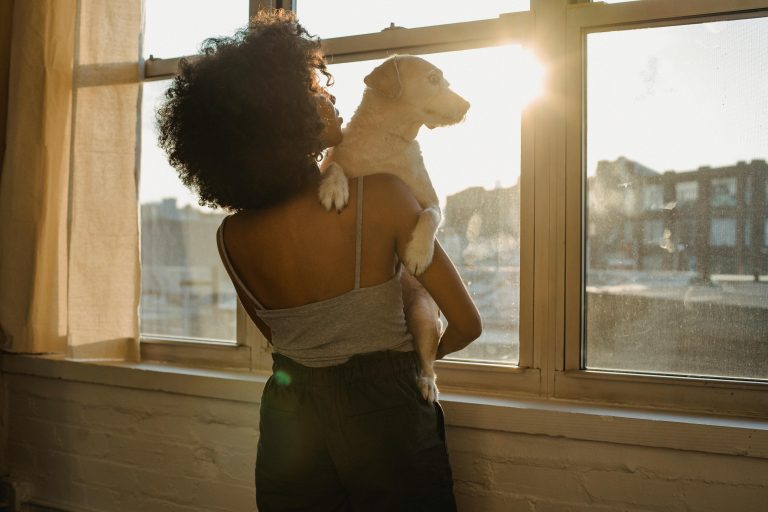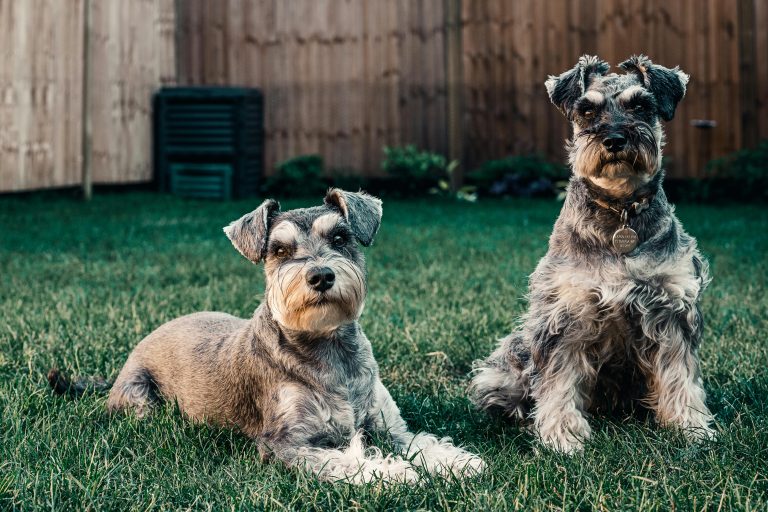Do Dogs Like to Be Hugged? | Revealing The Truth
Introduction
have you ever wondered, Do dogs like to be hugged? Dogs have been cherished companions to humans for centuries, providing love, loyalty, and companionship. As dog owners, it’s natural to express affection through hugs. This article delves into the intricate world of Dogs behavior, exploring whether our furry friends truly enjoy the embrace of a hug.

Exploring Dogs Communication
Do Dogs Like to Be Hugged? Understanding a dog’s perspective on hugs begins with decoding their communication. Dogs communicate through body language, and each tail wag, ear twitch, or facial expression carries a message. By paying attention to these cues, we can gain valuable insights into our canine friends’ feelings.
Signs of Discomfort or Stress in Dogs
Hugging may not be universally loved among dogs. Signs of discomfort include a stiff body, avoidance of eye contact, and yawning, indicating stress. It’s essential to recognize these signals and respect a dog’s boundaries to maintain a positive relationship.
Individual Variations in Dog Preferences
Just like humans, dogs have individual personalities and preferences. Some dogs may adore hugs, leaning into the warmth of human contact, while others may find it uncomfortable. It’s crucial to consider the uniqueness of each dog and tailor our interactions accordingly.
Understanding Canine Body Language
Reading Facial Expressions
A dog’s face is a canvas of emotions. Relaxed eyes, an open mouth, and a gently wagging tail signify happiness and comfort. On the other hand, a furrowed brow, tense mouth, or averted gaze may indicate unease. Observing these subtle cues can guide us in understanding a dog’s emotional state during hugs.
Interpreting Tail Wagging
Contrary to popular belief, not all tail wagging is a sign of joy. The speed, height, and direction of a wag can convey different meanings. A slow, low wag may indicate insecurity, while a high, rapid wag suggests excitement. Context is key to correctly interpreting a dog’s tail language.
Importance of Ear Position
Ears are another expressive feature in a dog’s body language repertoire. Pricked ears signal attentiveness or excitement, while flattened ears indicate fear or submission. Understanding ear position in conjunction with other cues provides a more comprehensive understanding of a dog’s emotions.
Factors Influencing Dogs’ Reaction to Hugs
Breed Differences
Certain dog breeds have distinct temperaments and preferences. While some breeds are known for their affectionate nature, others may be more reserved. Researching and understanding the characteristics of your dog’s breed can offer insights into their likelihood of enjoying hugs.

Early Socialization
A dog’s early experiences play a crucial role in shaping their behavior. Puppies that receive positive exposure to various human interactions, including gentle hugs, are more likely to accept and enjoy them in adulthood. Proper socialization sets the foundation for a well-adjusted and confident adult dog.
Personal Experiences and Trauma
Dogs, like humans, carry emotional baggage from past experiences. Rescue dogs or those with traumatic histories may be sensitive to touch, associating it with negative memories. Patience, gentleness, and positive reinforcement are essential when building trust with such dogs.
Positive Signs of a Dog Enjoying Hugs
Relaxed Body Language
A dog that enjoys hugs will exhibit a relaxed body posture. Their muscles won’t be tense, and they may lean into the hug or reciprocate with gentle nudges. These subtle cues indicate a sense of comfort and security in the embrace.
Seeking Physical Contact
Dogs that seek out physical contact, such as leaning against their owners or placing a paw on their lap, often enjoy hugs. This behavior signifies a desire for closeness and strengthens the bond between the dog and their human.
Signs of Affection
Affectionate behaviors, like licking, gentle tail wagging, or even a content sigh, are positive signs that a dog appreciates the hug. These gestures demonstrate a sense of connection and trust in the relationship.
Negative Signs and Why Dogs May Dislike Hugs
Feeling Restrained
Dogs are naturally mobile creatures, and restraint, even in the form of a hug, may cause discomfort. Some dogs may interpret the physical closeness as a loss of freedom, leading to stress or anxiety.
Sensitivity to Touch
Not all dogs are fond of physical touch, especially in specific areas like their paws, ears, or tails. It’s essential to be aware of your dog’s sensitivities and avoid triggering any discomfort during hugs.
Past Negative Experiences
Dogs with past negative experiences involving physical contact may develop aversions to hugs. It’s crucial to approach such dogs with patience, allowing them to build trust at their own pace.

Respecting Individual Preferences
Building Trust with Your Dog
Trust forms the foundation of a strong bond between a dog and their owner. If your dog is hesitant about hugs, focus on building trust through positive interactions, treats, and play. Gradually introduce hugs in a way that respects your dog’s comfort level.
Gradual Introduction to Hugging
For dogs that may be unsure about hugs, introduce the act gradually. Start with brief periods of gentle physical contact and observe your dog’s response. Pay attention to their cues and adjust your approach accordingly.
Creating a Comfortable Environment
Ensure that the environment is conducive to positive interactions. Avoid forcing hugs and provide a comfortable space where your dog feels secure. Creating a positive association with hugs is key to fostering a loving connection.
Alternatives to Hugging
Understanding Dogs’ Preferred Interactions
While hugs may be a human expression of affection, dogs have their own preferred ways of bonding. Understanding your dog’s preferences, whether it’s playtime, belly rubs, or a shared walk, ensures that the bond is built on mutual enjoyment.
Playful Activities
Engaging in play is an excellent way to strengthen the bond with your dog without relying on hugs. Interactive games, fetch sessions, and puzzle toys provide mental stimulation and reinforce the positive connection between you and your furry friend.
- What is Australia Famous For?
- Do Dogs Lick Lips When Happy?
- Why Does My Dog Cry When I Hold Him?
- Is Mating Healthy for Dogs?
- Can I Wash My Dog’s Toys? Unveiling the Secrets to a Healthy Pet
Effective Communication without Physical Contact
Communication goes beyond physical touch. Dogs respond well to verbal cues, positive reinforcement, and consistent training. Establishing clear communication channels enhances the relationship without the need for physical gestures like hugs.
Myths about Dogs and Affection
Dispelling Common Misconceptions
Several myths surround dogs and their expression of affection. Dispelling these misconceptions is crucial for understanding and respecting our canine companions. One common myth is that a wagging tail always indicates happiness. As discussed earlier, tail language is nuanced and context-dependent.
Recognizing Affection in Different Forms
Dogs express affection in diverse ways, and it’s essential to recognize and appreciate these variations. Some dogs may be more reserved, showing affection through gentle nudges or a comforting presence. Understanding and respecting these individual differences deepen the bond between humans and dogs.
Importance of Tailoring Interactions to Each Dog
Every dog is unique, and there is no one-size-fits-all approach to expressing affection. Tailoring interactions to suit your dog’s personality, preferences, and history ensures a positive and fulfilling relationship. Whether your dog enjoys hugs or not, fostering a connection based on mutual understanding is key.
Expert Insights
Veterinarians’ Opinions on Dog Behavior
Veterinarians play a crucial role in guiding dog owners on behavioral aspects. According to Dr. Emily Carter, a renowned veterinarian, “It’s essential to recognize that each dog is an individual with its own likes and dislikes. While some dogs may thrive on physical closeness, others may prefer alternative forms of affection.”
Canine Behaviorists’ Perspectives
Canine behaviorists specialize in understanding and interpreting dog behavior. Dr. Sarah Rodriguez, a certified canine behaviorist, emphasizes the importance of observing a dog’s body language. “Dogs communicate primarily through body language. It’s crucial to pay attention to their signals to ensure positive interactions,” says Dr. Rodriguez.
Research Findings on Canine Communication
Ongoing research in canine communication sheds light on the intricate ways in which dogs express themselves. Studies indicate that dogs use a combination of vocalizations, body language, and scent to convey emotions. Staying informed about these findings enhances our ability to connect with and understand our furry companions better.
Tips for Safe Hugging
Observing Your Dog’s Cues
The key to safe and enjoyable hugs is closely observing your dog’s cues. If your dog leans into the hug, wags their tail, and appears relaxed, it’s likely a positive experience. On the other hand, if they exhibit signs of discomfort, it’s crucial to respect their boundaries.
Avoiding Sudden Movements
Dogs can be startled by sudden movements, so it’s essential to approach hugs gradually. Avoid surprising your dog with abrupt hugs, especially if they are not accustomed to such physical closeness.
Providing Positive Reinforcement
Positive reinforcement plays a pivotal role in shaping your dog’s behavior. If your dog responds well to hugs, reinforce the positive behavior with treats, praise, or additional affection. This creates a positive association with the act of hugging.
Conclusion
In the debate over whether dogs like to be hugged, the answer lies in understanding and respecting individual differences. While some dogs may revel in the warmth of a hug, others may prefer alternative expressions of affection. The key is to observe and listen to your dog’s cues, tailoring your interactions to ensure a positive and comfortable experience for both of you.




Leave a comment